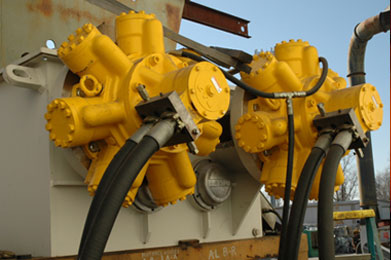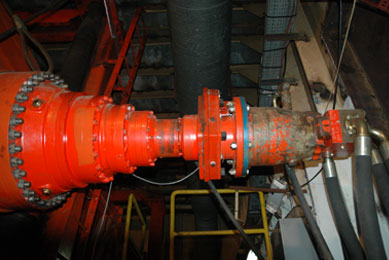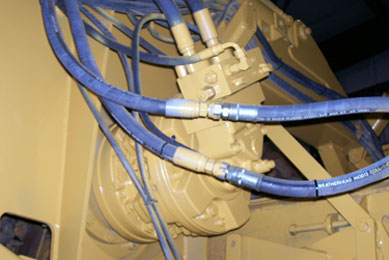In most hydraulic systems there are some common points of concern for the operator or the maintenance manager. The first consideration is the integrity of the hydraulic fluid that is being used to drive the system which is designed to cause some device to turn or to move.
The Trakker System can monitor the following functions
- Pressure
- Flows
- Pressure (PSI) X Flow = Power
- Filter Conditions
- Fluid Condition (contaminates in the hydraulic fluid)
Example: Donaldson - Online Particle Detector “IcountPD”
- Temperature
- Cavitation/Aeration
A symptom that is measured via a vibration sensor (See Below)
- Vibration Monitoring
Concerns
- Does the hydraulic fluid contain contaminating solids that are the result of corrosion or some breach in the fluid system’s integrity that is allowing foreign particles to enter the reservoir? Is there water in the hydraulic fluid?
- What is the condition of the filter material – has it reached the “load” limit for foreign material, or is the bypass system engaged by default or neglect?
- What is the temperature of the hydraulic fluid, the hydraulic pump, and the hydraulic pump motor? In addition, if there is a hydraulic motor that is being driven by the hydraulic fluid – then what is the temperature of the hydraulic motor? Temperature and vibration of each component is very important. Heat is wasted HP and usually indicator of problem. Most components have a max operating temp of 175(°F)
- Is there cavitation as the result of either water or air?
- Is there a change in the operating conditions that results in a change in the vibration signal of the hydraulic pump or the drive motor?
The TRAKKER system will notify the operator/maintenance manager (or maintenance personnel) that:
- There are contaminating solids and/or moisture present in the fluid
- The filter material is approaching the filter medium’s load limit system and components temperatures
- What the temperature is of the fluid, the pump, the pump motor, and the hydraulic motor (if there is one) in real time
- That there is a change in the noise (vibration signature of the pump, pump motor, and/or the hydraulic motor) trend the information for analysis of health.
As has been said by the old maintenance man - “it’s good to know the noise is changing before you can hear that the noise has changed”
What is Cavitation?
Cavitation is a phenomena that takes place inside of hydraulic systems where the formation of vapor bubbles collect in the hydraulic oil. This can happen from temperature swings or pressure changes inside the system. These bubbles most often consist of oil vapor mixed with air and can cause pitting in the metal surfaces of the system. The pitting is caused by microscopic shock waves that implode the tiny cavitation bubbles while they are attached to the metal surfaces inside the system. For more detailed info please visit this page

When a hydraulic system fails – nobody cares why, at that particular time – what they care about is "how can I replace the parts and how long before I can resume operations?"

The Trakker System Solution
Trakker can monitor hydraulic power units/hydraulic motor drive systems. In either open or closed loops. Gain the peace of mind of knowing that this critical piece of equipment is running efficiently and problem-free with all systems being monitored by the Trakker System. Avoid the money, downtime and all the headaches that come with failure on your hydraulic systems.
